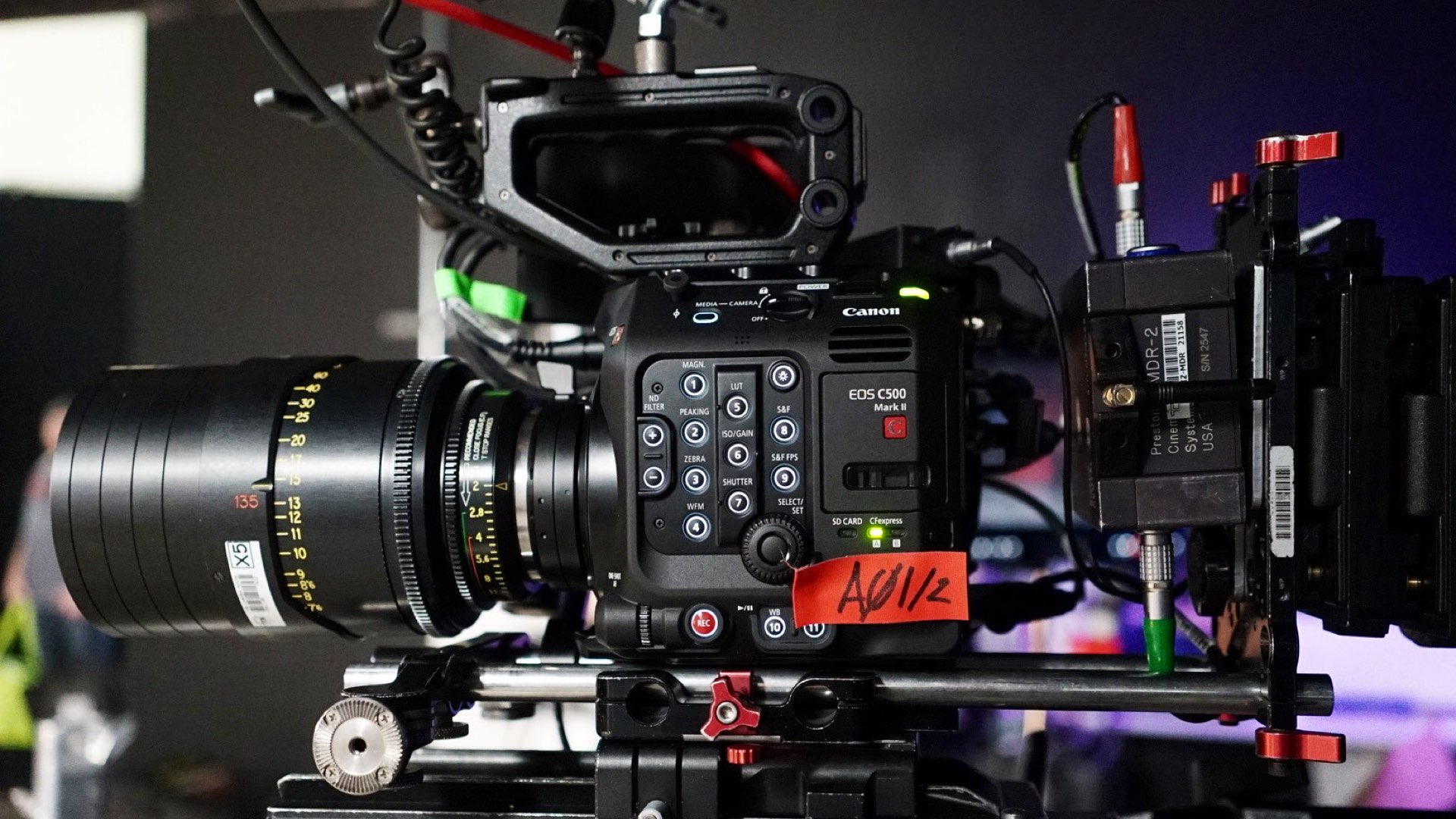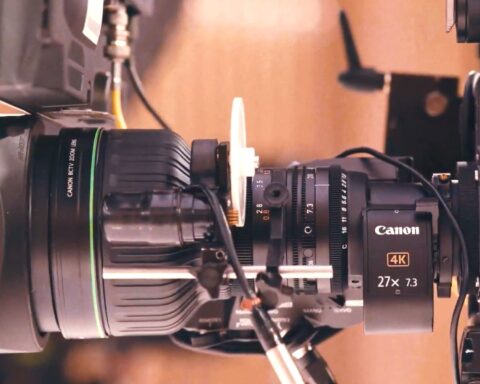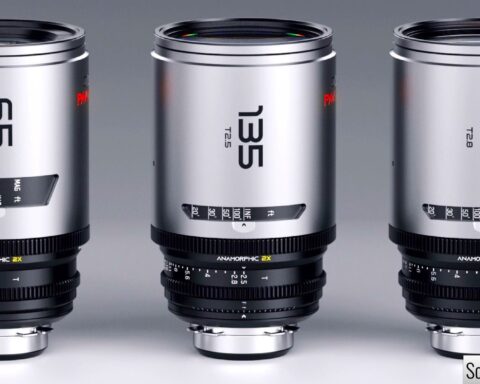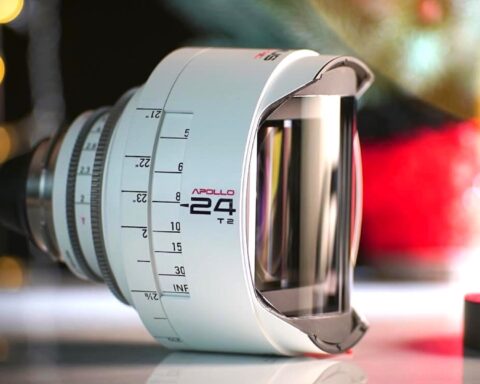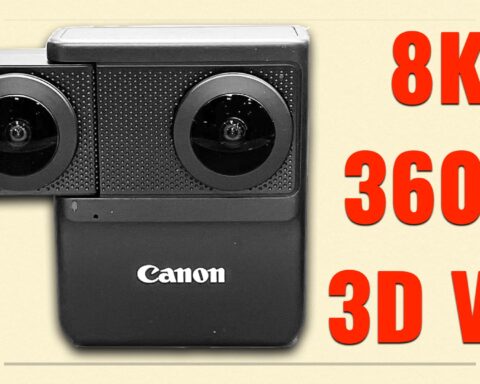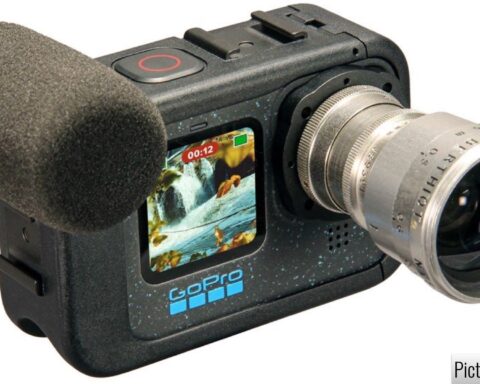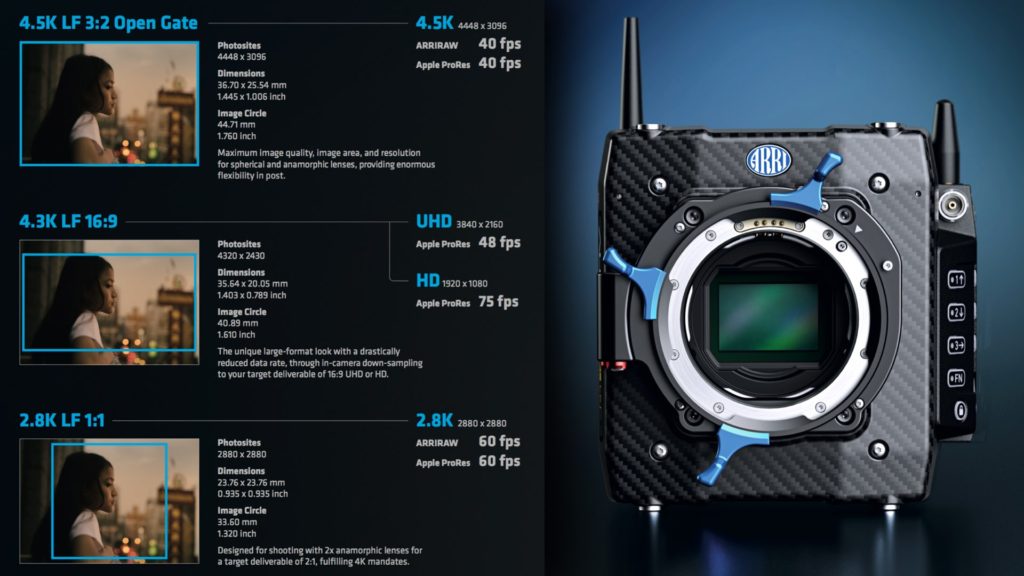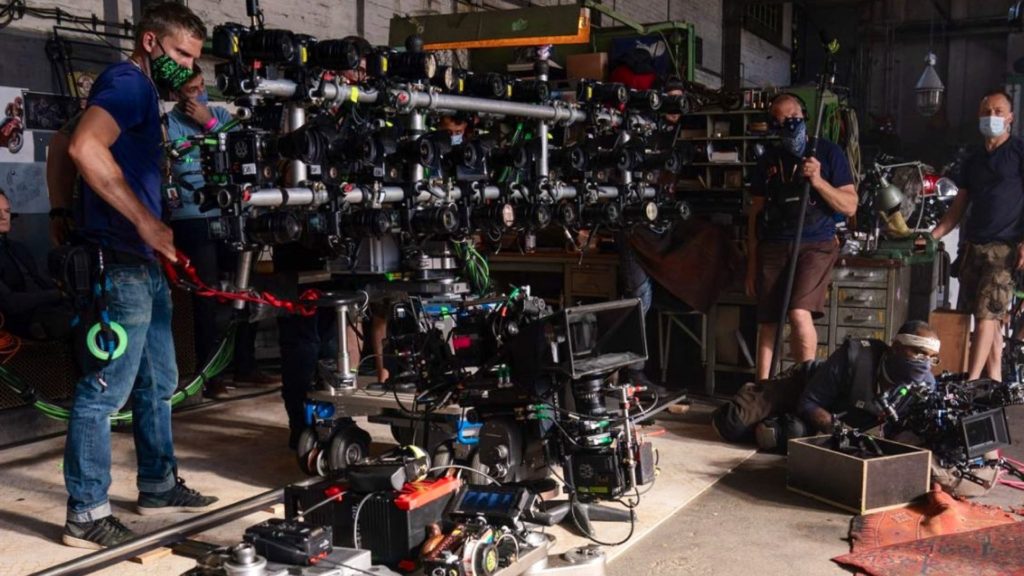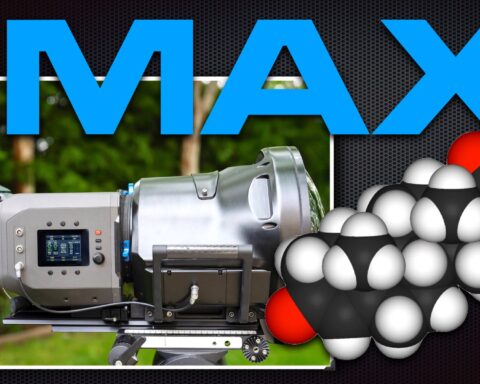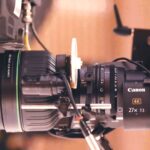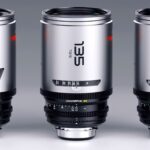Co-director, producer, and cinematographer Daniel B. Levin utilized full-frame cinematic tools to film a documentary about the life of NBA basketball legend Kevin Garnett. The docu titled ‘Kevin Garnett: Anything Is Possible’, was shot on the Canon C500 Mark II, paired with the Sumire Primes and Cooke S4/i. In this article, Daniel elaborates on the art of shooting interviews, and how to make them look beautiful and cinematic.
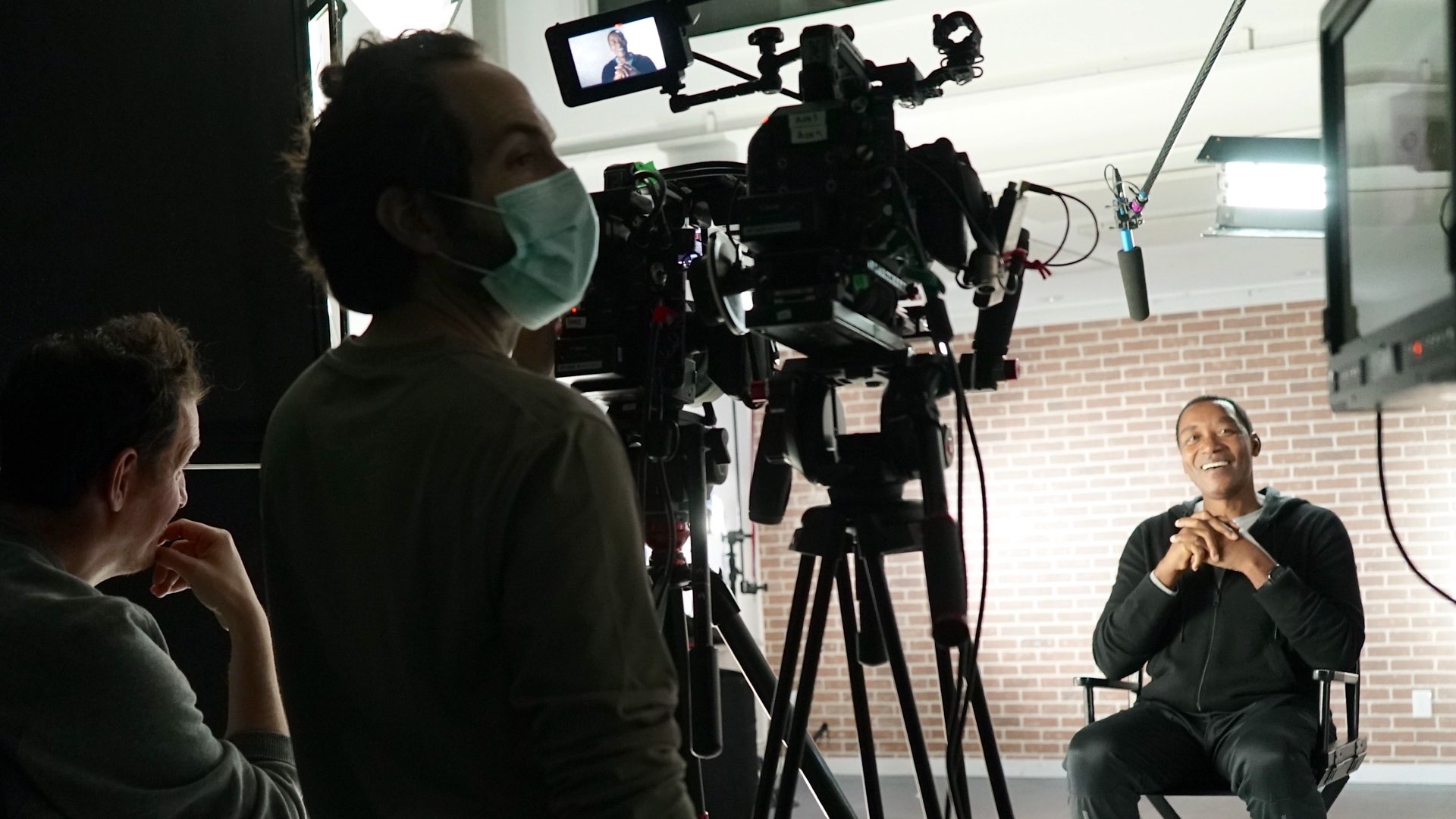
Shot on C500 Mark II, Sumire, and Cooke S4/i
Daniel B. Levin and his team trusted Canon’s EOS C500 Mark II, EOS C300 Mark II, Sumire Prime lenses, and Cooke S4/i to capture intimate interviews with Garnett and those who know him best, uncovering his remarkable career and the progressive moments that defined it. This bold new documentary chronicles Garnett’s life, on-and-off-the-court legacy, and unprecedented journey from teenage basketball phenom to game-changing superstar to his induction into the Basketball Hall Of Fame. It also examines the lasting effect his actions had on the NBA and the cultural conversation surrounding it. KEVIN GARNETT: ANYTHING IS POSSIBLE was premiered in November. Levin stated that shooting with Canon’s cameras and lenses in full-frame helped him achieve character-driven interviews and content of Garnett himself that draws the viewer into the narrative. Y.M.Cinema Magazine has interviewed Levin on the making, and why he chose those specific tools for the job.
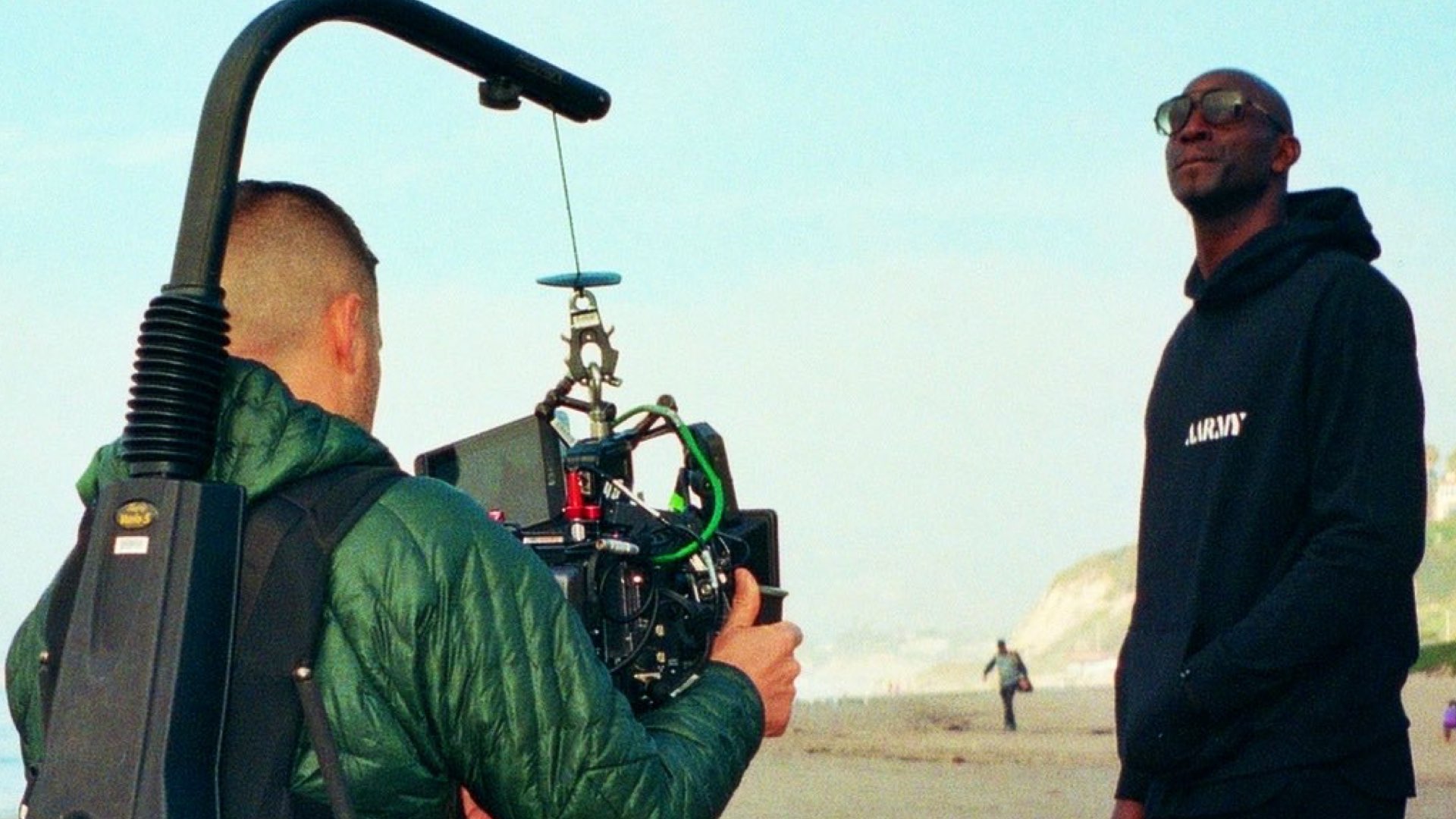
Once you know all these rules, you can break them and start creating unique setups on your own that rewrite the rules for everyone!
From cinematographer to director
Y.M.Cinema Magazine: Please share a short bio describing your cinematography career.
Levin: I have been working as a cinematographer primarily in documentaries. Docs were really my original creative path into filmmaking, being a visual person, it was natural for me to pick up a camera and begin to tell stories. I learned from incredible filmmakers including my father, Marc Levin, at Blowback Productions and Mark Benjamin while shooting a doc verité series called Brick City. The ability and opportunity to capture the stories and nuances of nonfiction has taken me all over the world and opened my eyes to some remarkable stories, experiences, and perspectives that I would not have received otherwise. Learning cinematography has helped me become a better director, producer, and overall filmmaker. I feel it’s important to know how multiple roles work on film production as ultimately it is one big collaboration.
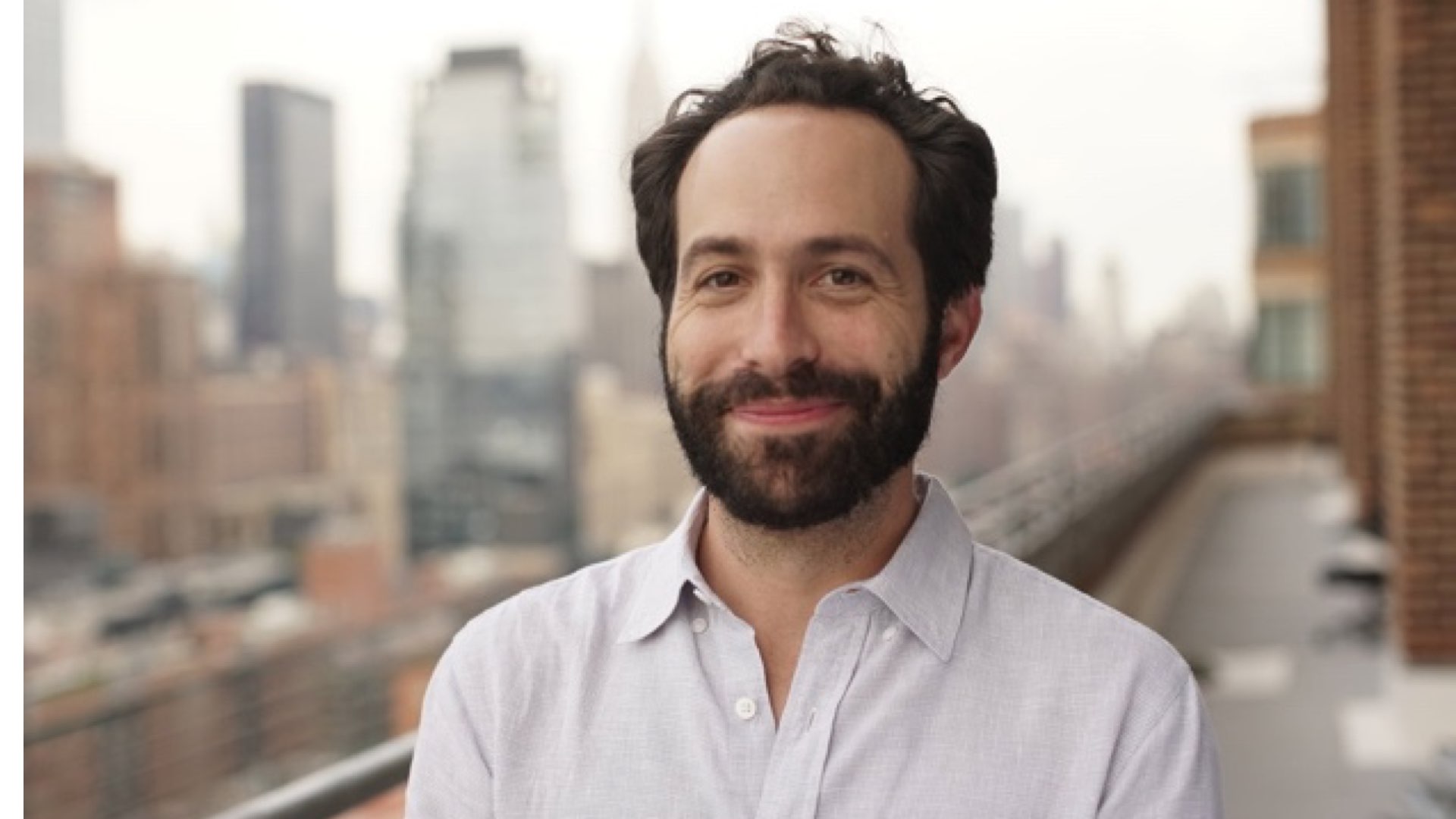
Learning cinematography has helped me become a better director, producer, and overall filmmaker.
Choosing the EOS Cinema
Y.M.Cinema Magazine: Why did you choose the EOS Cinema over other cinema cameras for shooting interviews?
Levin: I have had a long relationship with Canon, and they have been my go-to documentary camera collaborator since their original EOS C300. I love the image quality, the colors, and the form factor that can go from a run and gun doc camera to a studio camera. I was excited when the EOS C500 Mark II came out, with 4K slow motion and a full-frame sensor, it was a great new tool, especially with larger-than-life characters.
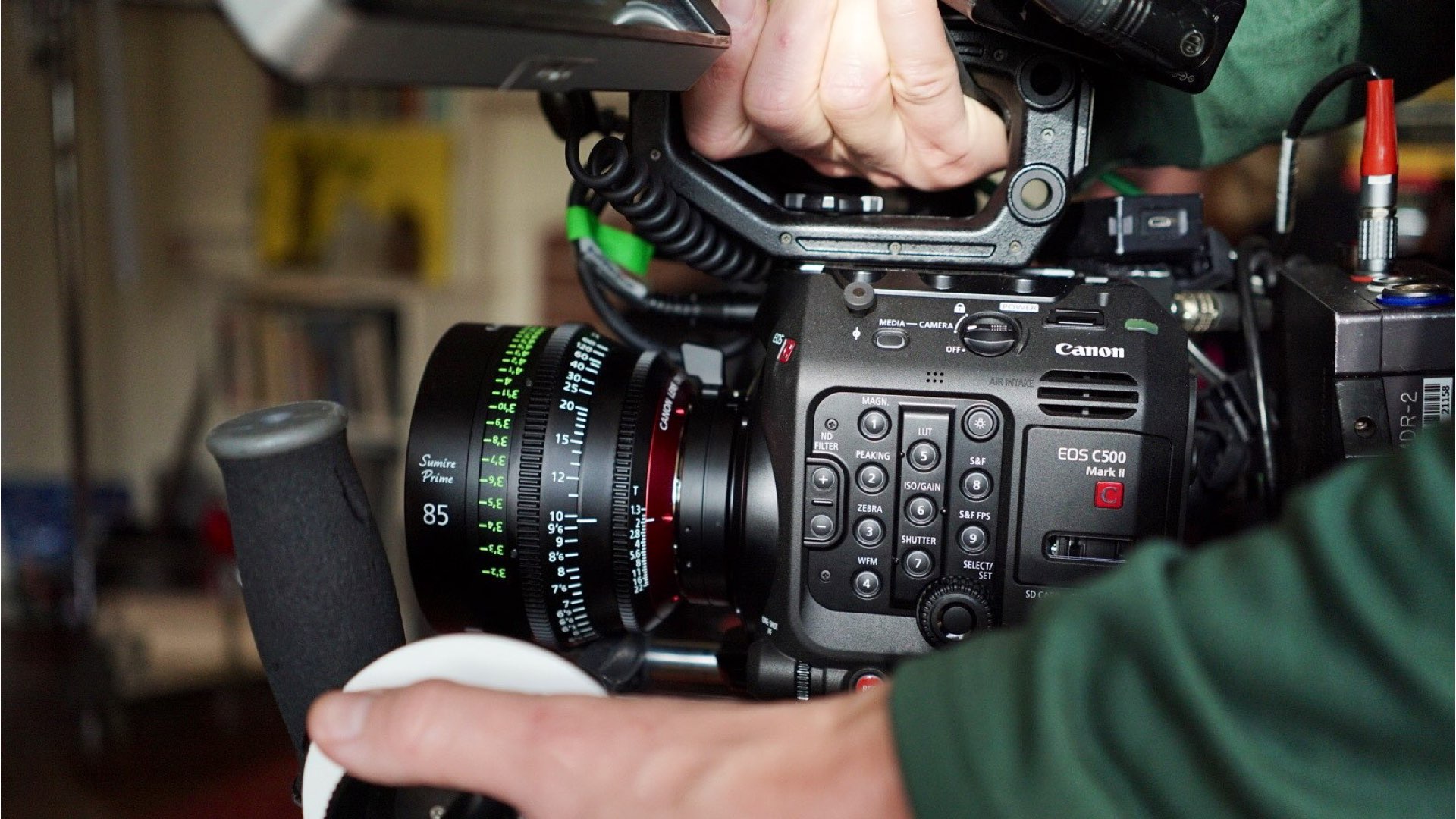
I love the image quality, the colors, and the form factor that can go from run and gun doc camera to a studio camera.
The specialty of the Sumire Primes
Y.M.Cinema Magazine: What were the reasons for picking the Sumire primes?
Levin: We went with the Sumire lenses, because they were full-frame, and they have more character and texture than the Canon CN-E primes.
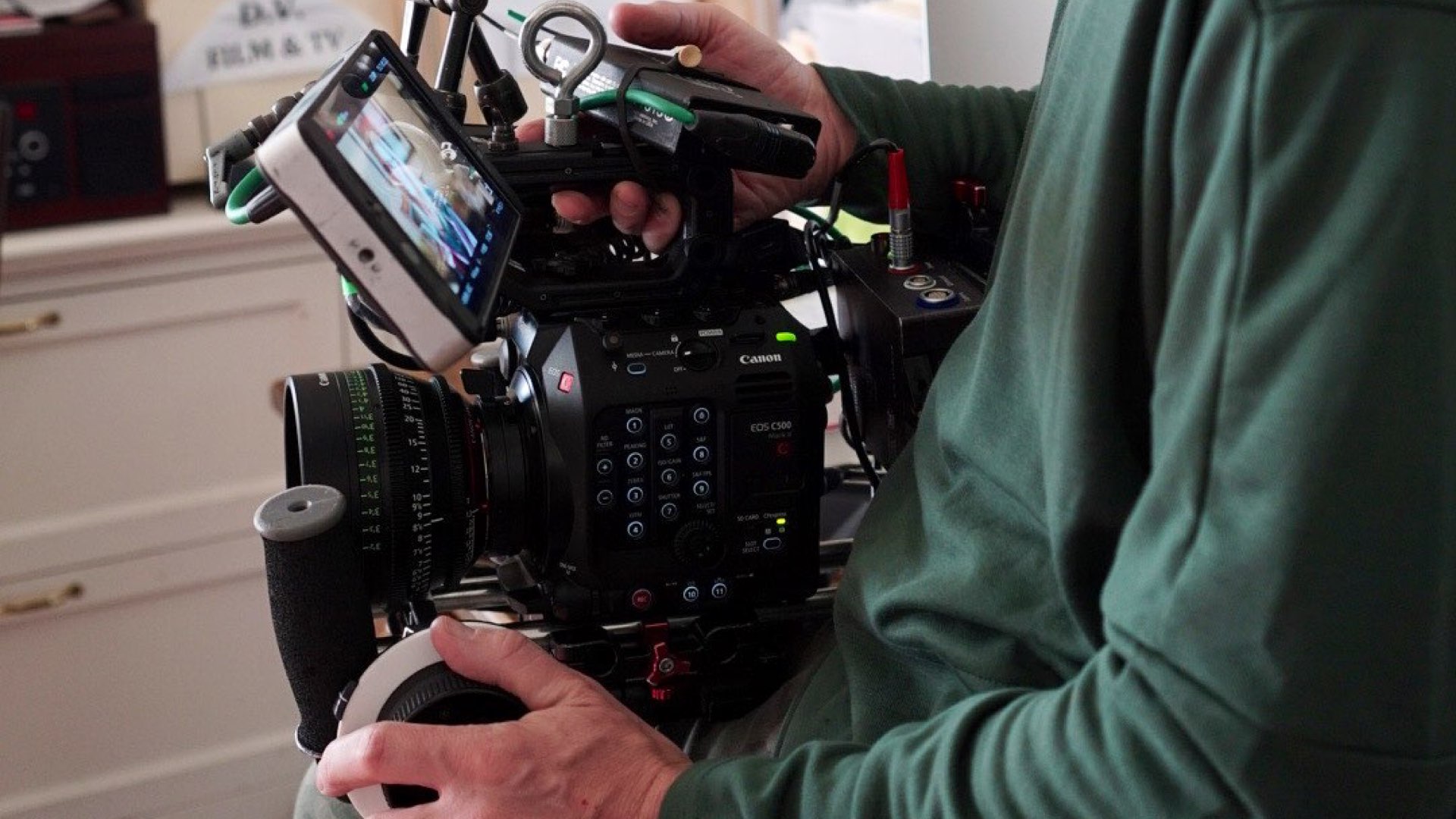
Shooting the interview: Camera setup
Y.M.Cinema Magazine: Please elaborate on your camera setup when shooting interviews.
Levin: The interview camera setups were a minimum of 2 cameras, a wide and tight frame stacked next to each other, and for certain interviews, we incorporated a 3rd camera that was at a profile angle. We placed the profile camera on a slider, giving us movement, which was key to complementing the excitement of the storytelling. The slider was also moving past lights that created flairs; this gave us a stylized touch. We wanted to bring out the characteristics in the Sumire lenses, especially with flairs. For many of the setups, we aimed light straight at the lenses. This was a bit of an homage to the stadium lights; game time feels in a Hollywood studio set.
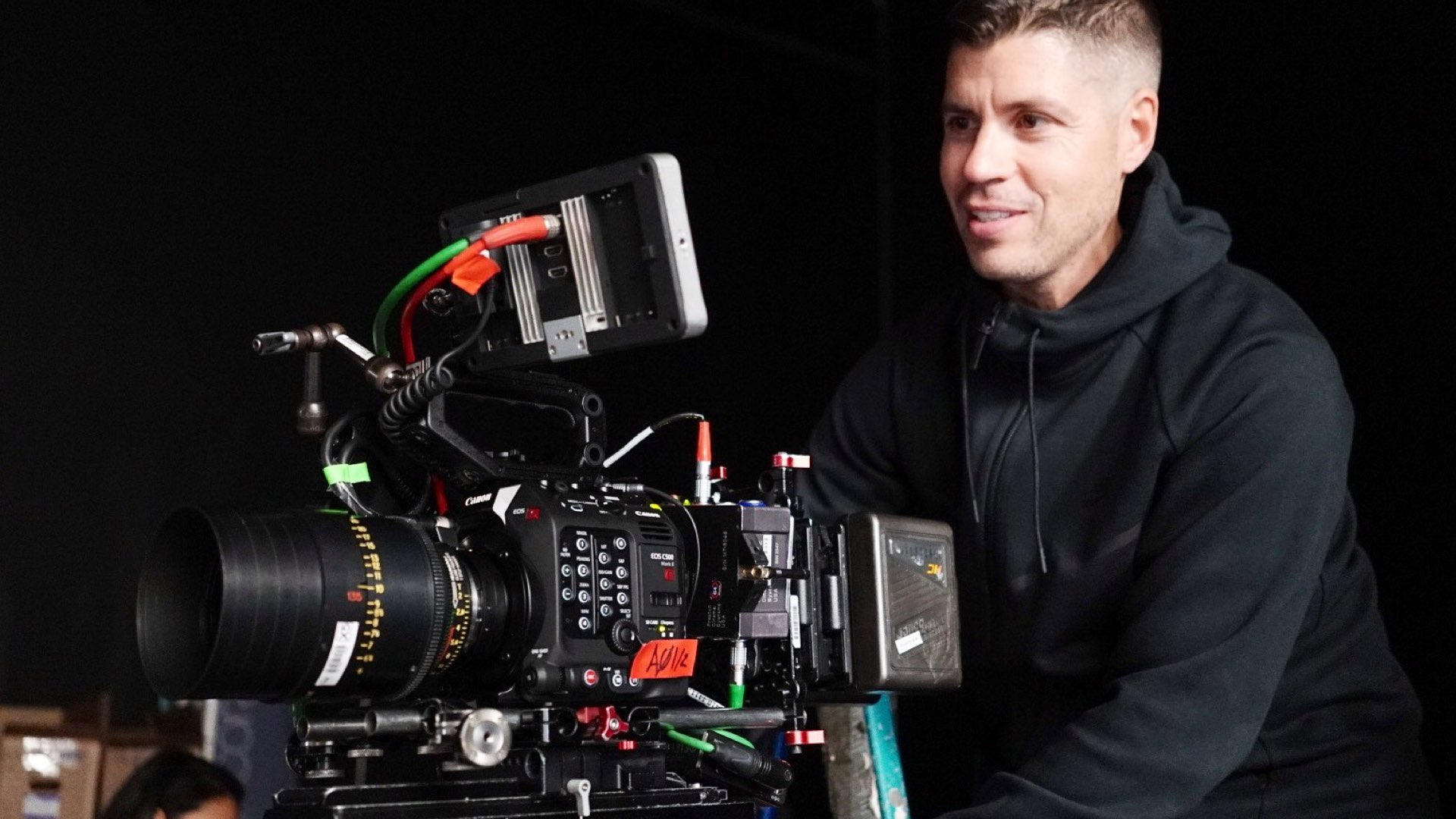
We placed the profile camera on a slider, giving us movement, which was key to complementing the excitement of the storytelling. The slider was also moving past lights that created flairs; this gave us a stylized touch.
Crafting interview shots
Y.M.Cinema Magazine: What’re the essentials of crafting interview shots?
Levin: We knew this film was going to rely heavily on interviews and archival, so we really wanted to create a world and unique feel to the interviews. I think the moving camera, the lights, the flairs really gave us a unique element as well as the color and the backgrounds. We created our own little behind-the-scenes world that the viewer could feel comfortable in, but was still exciting and visually unique to look at.
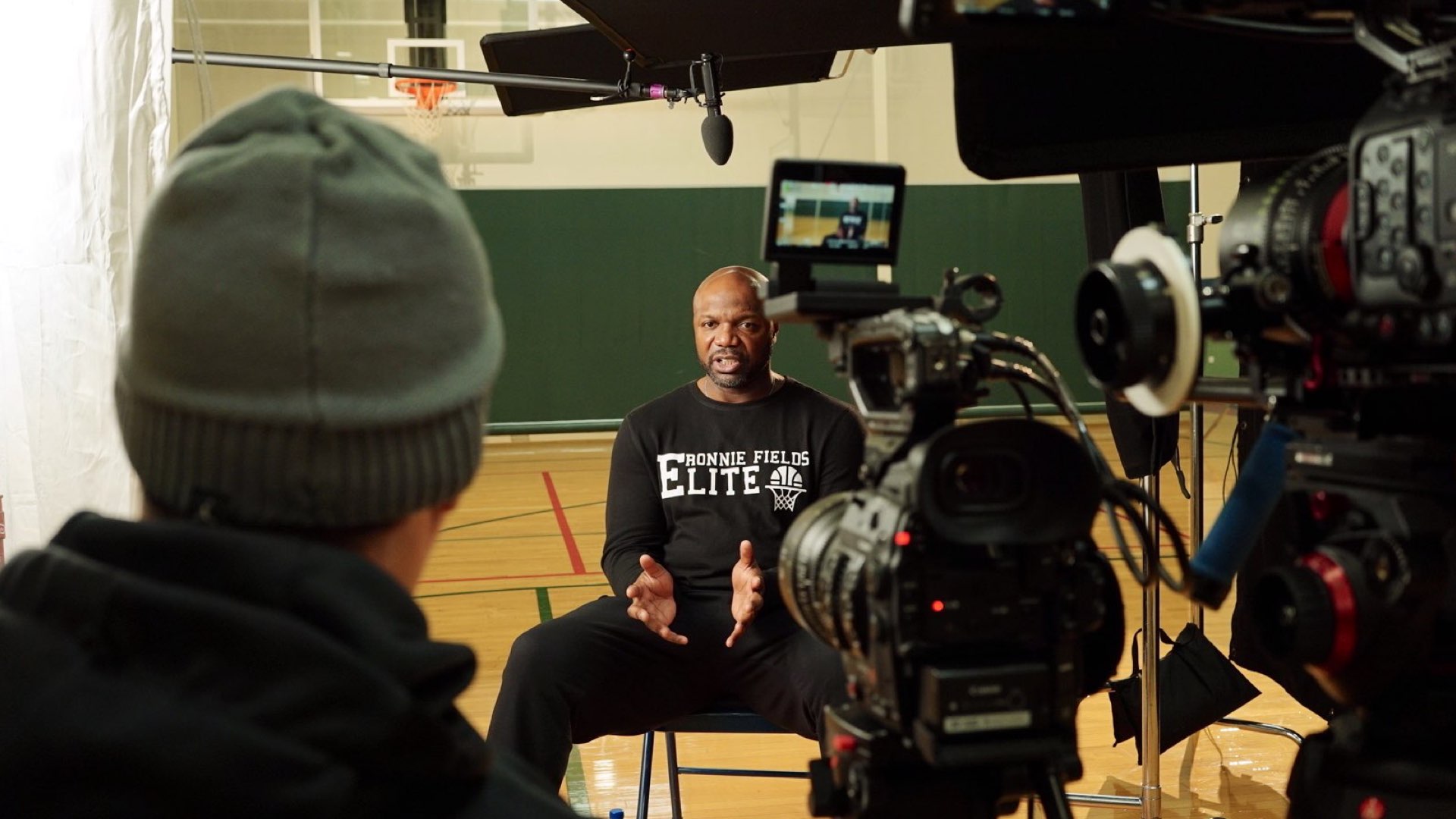
I think the moving camera, the lights, the flairs really gave us a unique element as well as the color and the backgrounds.
Tips & tricks
Y.M.Cinema Magazine: What’re your tips and tricks for good and professional interview shots?
Levin: I think the key to shooting good and professional interviews is lighting. Always ensure that your subject is lit in a pleasing way. Soft light is key and usually preferable for me – but it also always depends on the circumstance and story you are telling. This doesn’t mean you need a professional setup.
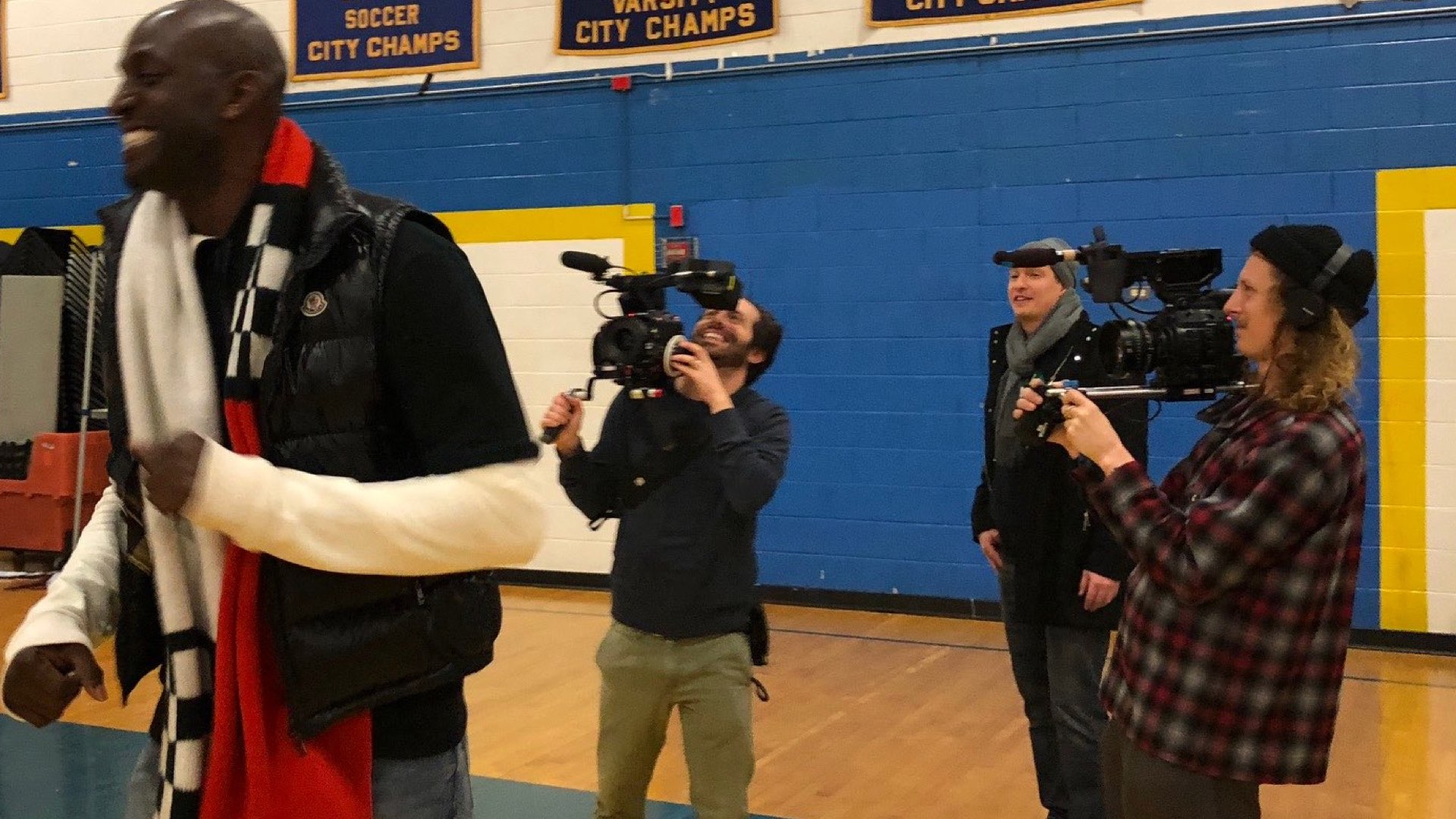
The key is understanding how the direction of the light source will affect the light on your subject.
For years, shooting run and gun documentaries we relied on natural light, placing a subject near a window. The key is understanding how the direction of the light source will affect the light on your subject. A window behind the camera will create a flattering effect on the subject vs a window to the side of your camera, which will create more of a wrap of light on the subject’s face.
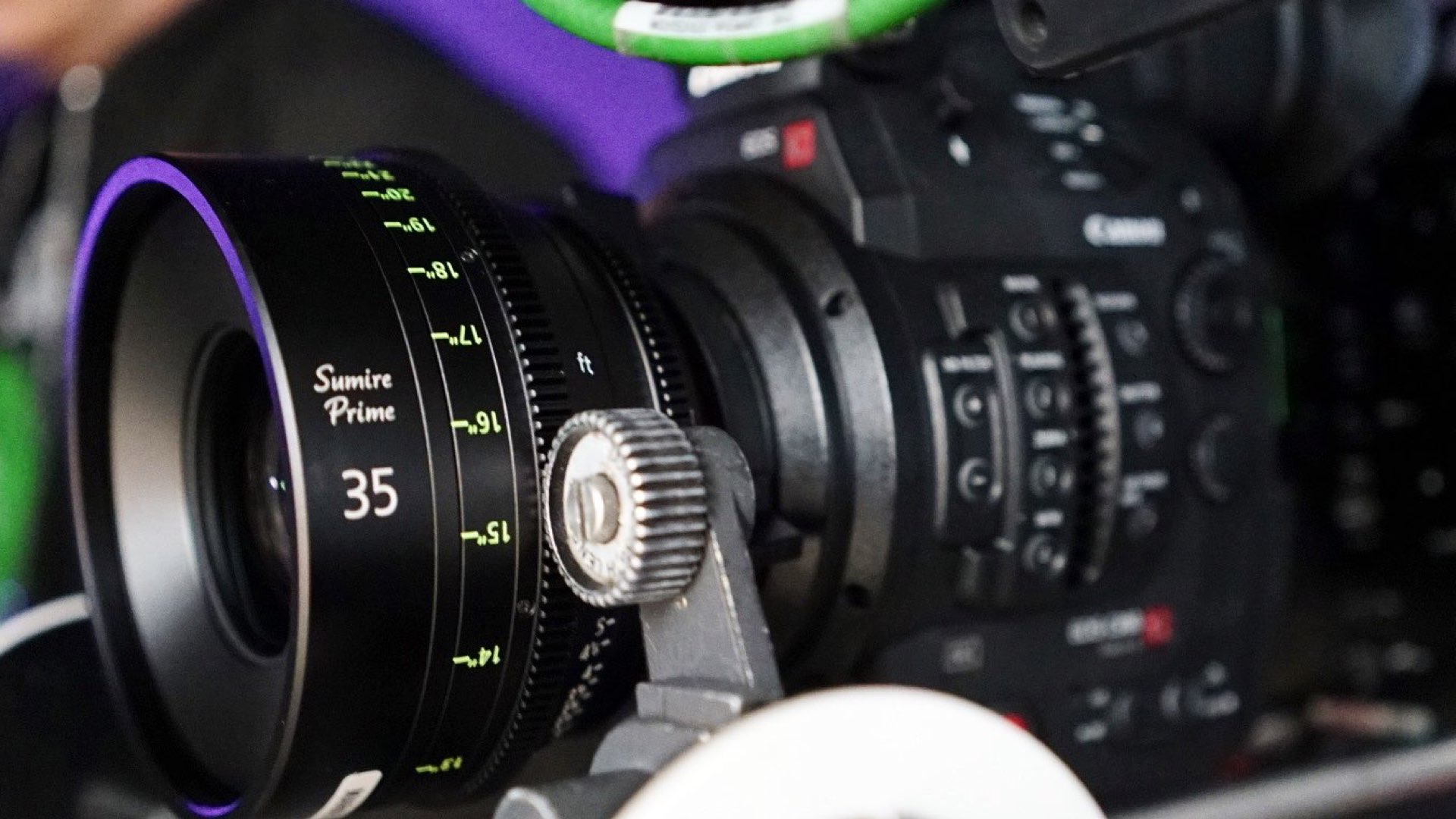
A window behind the camera will create a flattering effect on the subject vs a window to the side of your camera.
Another key to interviews is having depth behind your subject, this creates a pleasing image versus having your subject against a wall; depth to me is cinematic. Finally, making sure your eye line is accurate is another key, you want the subject to have similar height with the closeup camera, looking directly off-camera (unless you are going for the straight to camera, Errol Morris look which is nice too). Most importantly, once you know all these rules, you can break them and start creating unique setups on your own that rewrite the rules for everyone!
Below you can find the official trailer of Kevin Garnett: Anything Is Possible:
Follow Daniel on social – @Danlivin, Instagram & Twitter, and on his website (www.danlevinfilms.com)
Product List
Here’re the products mentioned in the article, and the links to purchase them from authorized dealers.
- Canon EOS C500 Mark II 5.9K Full-Frame Camera Body
- Canon Sumire Primes Cinema Lenses
- Cooke S4/i Cinema Lenses


